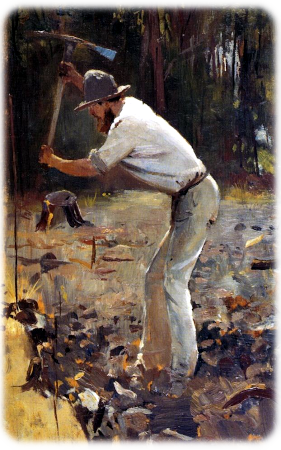- News & information
- About
- History
- George V. Voinovich
- George V. Voinovich Collection
- Calendar
- How to Find Us
- News
- Archives
- Photojournalism Fellowship Project
- Photo Essays
- Current Fellow
- Previous Fellows
- Reports and Publications
- Archives
- Students
- Prospective
- Center for Entrepreneurship
- Environmental Studies
- HTC/Voinovich School Scholars
- Master of Public Administration
- Current
- HTC/Voinovich School Scholars
- Center for Entrepreneurship
- Environmental Studies
- Master of Public Administration
- Alumni
- Contact
- School Leadership
- Strategic Partners Alliance
- Ohio University Public Affairs Advisory Committee
- Ohio University Public Affairs Advisory Committee
- Faculty and Fellows
- Faculty
- Visiting Professors
- Voinovich Fellows
- Professional Staff
Woronina

The articles that resulted from the late Dan Dylewski's dissertation (Ohio University) form the major part of the ultrastructural literature for Woronina . Robbins and Braselton (1997) recommended that what had previously been considered as Sorodiscus cokeri be renamed to Woronina cokeri .
The Discussion in Karling's (1981) paper should be read by anyone studying plasmodiophorids so that a standard set of terminology be agreed upon by all working with the group. Karling's recommended terminology is used on the Plasmodiophorid Home Page.
Personal Comments
Dan Dylewski was Charles Miller's student, but worked closely with me because of transmission electron microscopy. Dan was meticulous with his techniques—his electron micrographs of Woronina were some of the most beautiful images of the plasmodiophorids. Dan developed methods to manipulate Woronina in culture with its host Pythium so that he could get cultures that contained primarily either sporangial or sporogenic stages of Woronina . Dan's success was due in part to his phenomenal hand-eye coordination that came shining through not only in his laboratory work, but in fishing, playing pool, and early versions of video games.
After Dan received his Ph.D. from Ohio University he always found ways for me to visit his family and him where he was in his latest position. When he was a postdoc at Purdue University, he became good friends with John Karling, and took a nice photograph of Dr. Karling and me in March 1982 when I was visiting Purdue Univesity to give a seminar. That was when Dr. Karling convinced me to start using terminology for plasmodiophorids that he recommended in his 1981 paper on Woronina leptolegniae .
Dan had gone through several postdoctoral positions and was in research at Kraft in Glenview, IL, by the time we got around to talking about karyotyping Woronina . Dan had invited me to his laboratory at Kraft as a consultant for a week, and when I left Kraft, he gave me most of his material of Woronina with sporogenic phases for me to serial section and karyotype.
Images of Woronina
- Woronina sporosorus and plasmodium, LMG
- Survey of Woronina transitional sporogenic plasmodium, TEMG
- Woronina transitional sporogenic plasmodium, TEMG
Selected References for Woronina
- Braselton, J. P. & D. P. Dylewski. 1986. Karyotypic analysis of Woronina pythii . Mycologia 78: 511-513.
- Cook, W. R. I. & W. H. Nicholson. 1933. A contribution to our knowledge of Woronina polycystis Cornu. Ann. Bot. 47: 851-859.
- Dylewski, D. P. & C. E. Miller. 1983. Cruciform nuclear division in Woronina pythii (Plasmodiophoromycetes). Amer. J. Bot. 70: 1325-1339/
- _____ & _____. 1983. Nuclear elimination during cyst formation in Woronina pythii (Plasmodiophoromycetes). Mycologia 75: 271-279.
- _____ & _____. 1983. Systematic and host range studies of Woronina pythii (Plasmodiophoromycetes) and host, Pythium species, from axenic culture. Mycologia 75: 412-422.
- _____ & _____. 1984. The ultrastructure of meiosis in Woronina pythii (Plasmodiophoromycetes). Mycologia 76: 1075-1088.
- _____ & _____. 1984. The ultrastructure of mitosis during sporangiogenesis in Woronina pythii (Plasmodiophoromycetes). Protoplasma 121: 42-53.
- Goldie-Smith, E. K. 1954. The position of Woronina polycystis in the Plasmodiophoraceae. Amer. J. Bot. 41: 441-448.
- Karling, J. 1964. Woronina pythii Goldie-Smith in India. Bull. Torrey Bot. Club. 91: 224-227.
- _____. 1981. Woronina leptolegniae n. sp., a plasmodiophorid parasite of Leptolegnia . Nova Hedwigia 35: 17-24.
- Robbins, R. K. & J. P. Braselton. 1997. Ultrastructure and classification of the genus Sorodiscus (Plasmodiophoromycetes). Mycotaxon 61: 327-334.
Contact Information:
(740) 593–9381 | Building 21, The Ridges
Ohio University Contact Information:
Ohio University | Athens OH 45701 | 740.593.1000 ADA Compliance | © 2018 Ohio University . All rights reserved.
